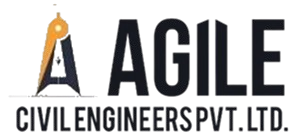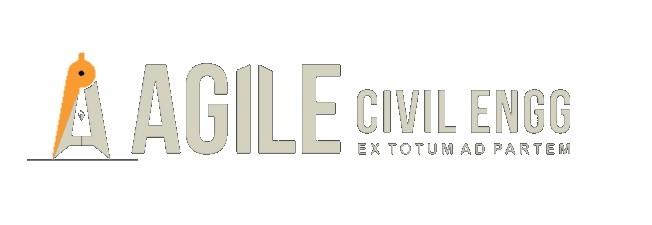Core Components of Quality Management in a Construction Project
Professional construction firms use a variety of tools and processes to ensure every project meets client requirements and industry standards. These quality and control measures, from planning documents to site checks, keep work on track, reduce rework, and give clients confidence in a smooth build. Let’s discuss each key tool or process, in plain language, showing how it helps ensure quality and efficiency on a project.
Quality Interventions
The Quality Assurance Plan (QAP)
QAP is a fundamental roadmap for project quality. It’s a formal document created by the project team that defines the project’s quality objectives, standards, and procedures. The QAP “serves as a reference for all the measures implemented on the worksite and is a central pillar of the worksite’s quality management system.” In other words, it lays out what quality criteria must be met, who is responsible, and how quality will be checked throughout the project. A clear QAP prevents confusion, minimizes errors, and acts as a roadmap to ensure the quality, compliance, and success of the worksite.
Nonconformance Material Report (NMR)
An NMR is a report used when delivered materials or equipment do not meet required specifications. The report records what went wrong, why, and what immediate corrections are made. This formal record ensures the issue is traced and corrected, for instance, by returning the bad batch or treating it before use, and triggers any needed preventive steps. By logging and managing nonconforming materials, the team prevents substandard parts from being used, maintaining overall project quality.
Inspection and Test Plan (ITP)
An ITP is essentially a quality control checklist for the work itself. It specifies when, what, and how inspections and tests will be done on the project. For each major phase or product (like concrete pours, welding, or painting), the ITP lists critical hold points where work must be reviewed or tested before proceeding. In construction, a good ITP “outlines and documents when, what, and how to conduct inspections to ensure your project meets the requirements and standards as promised.” For example, before pouring concrete, the ITP might require checks on rebar placement and formwork and then later test the hardened concrete. The ITP helps the team stay organized; it makes sure nothing is missed, shows compliance with codes or client specs, and makes future audits or handovers smoother. By following the ITP, teams catch defects early, keeping the project on schedule and avoiding expensive rework.
Standard Operating Procedures (SOPs)
SOPs are written step-by-step instructions for routine tasks, ensuring they’re done the same way every time. In QA/QC, SOPs describe the exact work steps for each quality or safety policy. As one source explains, “Your standard operating procedures should describe the work steps you carry out for each of your quality assurance and quality control policies and procedures.” Well-written SOPs remove guesswork; everyone follows the same guidelines for tasks like welding, formwork assembly, or material handling. This consistency reduces errors, keeps work safe, and helps new team members quickly learn the approved methods.
Planning and Communication Tools
Method Statement
A method statement is a document that spells out how a specific construction activity will be carried out, including safety and quality steps. It answers questions like: What is the work sequence? What equipment and materials will be used? What precautions (especially safety) are needed?. For example, a method statement might describe how to safely demolish a wall, step by step, including the order of operations and how debris will be managed. Having this written plan ensures everyone understands the task, minimizing accidents or misunderstandings. It also shows the client or regulators that the team has thought through every detail before starting work.
RACI Matrix
A RACI matrix is a simple chart used in project planning to clarify team roles for each task. RACI stands for Responsible, Accountable, Consulted, and Informed. In a RACI chart, each task or deliverable is marked with who is Responsible (does the work), Accountable (ultimately approves it), Consulted (gives input), and Informed (kept updated). In practice, every inspection, approval, or deliverable has clear owners. When roles are transparent, decisions move faster and things don’t fall through the cracks. For example, the project manager might be accountable for a foundation pour, an engineer responsible for testing, a client representative consulted about the sequence, and other subcontractors informed. The RACI matrix prevents duplication of effort and confusion, boosting communication and efficiency.
Vendor and Material Control
Vendor/Source Approvals
Before purchasing, qualified vendors or material sources are pre-approved to ensure they can meet project standards. This process involves vetting suppliers to confirm they provide consistent, quality products. A structured vendor approval program “ensures you engage with reliable vendors consistently delivering quality products or services.” In practice, the team compares a supplier’s offerings to the project’s needs (quality, capacity, price) and only adds them to the approved list once they meet all criteria. By approving vendors in advance, the project avoids last-minute sourcing problems and builds long-term partnerships with trusted suppliers.
Factory Clearances
For critical equipment or prefabricated items, a factory clearance may be required before shipment. This means the quality team or a third-party inspector visits the vendor’s factory to verify that items have been built and tested to spec. The inspector checks measurements, materials, and test certificates on site. Factory clearance prevents problems like shipping an incorrect component; anything wrong can be fixed before delivery.
Consignee Inspections
When materials arrive on site, the on-site (consignee) team inspects them against the purchase order and quality standards before unloading. The inspector checks quantities, labels, and condition right away. For example, incoming bundles of rebar would be spot-checked for proper size and damage. Documenting this “point of receipt” inspection creates an official record of condition at arrival.
Material Request Approval
On site, teams use material request forms to order supplies. An MR approval process means these requests are reviewed before purchase. Project engineers or budget holders confirm that each requested item is correct, needed, and within budget. For example, if a foreman submits a request for 10 extra cable reels, a manager checks the specs and inventory before authorizing the buy. It’s a final check to keep materials controlled and properly accounted for.
Testing and Close-Out
NDT & DT Evaluations
Before final acceptance, specialized tests check the integrity of critical parts. Nondestructive testing (NDT) methods inspect materials and welds without harming them. For example, welds may be radiographed to find hidden cracks. Destructive testing (DT) involves sacrificing samples (like crushing concrete cylinders) to measure strength. Both are crucial for safety: as one source notes, NDT and DT “are crucial for assessing the quality, integrity, performance, and service life of materials, components, and structures.” NDT lets the team inspect the actual installed work in place, while DT provides definitive data. Using both gives a complete quality check. The results verify that the structure truly meets design values and standards. If anything fails, it must be corrected before the project closes out.
Reconciliations
As the project winds down, reconciliations ensure the as-built reality matches the project records. This includes document reconciliation (confirming all drawings, permits, test reports, and manuals are collected and up to date) and material reconciliation. These checks catch any missing items or discrepancies. Correcting reconciliation issues before handover avoids last-minute surprises and final billing problems. In effect, reconciliations tie up loose ends and prove that everything is accounted for, which is essential for final payment, warranty claims, and handing over a certified, complete project to the client.
Conclusion
By systematically using these quality tools from early planning documents (QAP, ITP, method statements) through site checks to final tests and reconciliations, a construction company demonstrates strong control over every facet of a project. Each tool has a clear purpose: preventing errors, catching problems early, clarifying responsibilities, or verifying outcomes. Together they form a professional quality management system. This depth of process not only ensures the final building meets the highest standards, it also gives clients confidence that the company can deliver safely, on time, and on budget. In short, mastery of these processes is the mark of a construction team committed to excellence and reliability.
Post a Comment
You must be logged in to post a comment.


